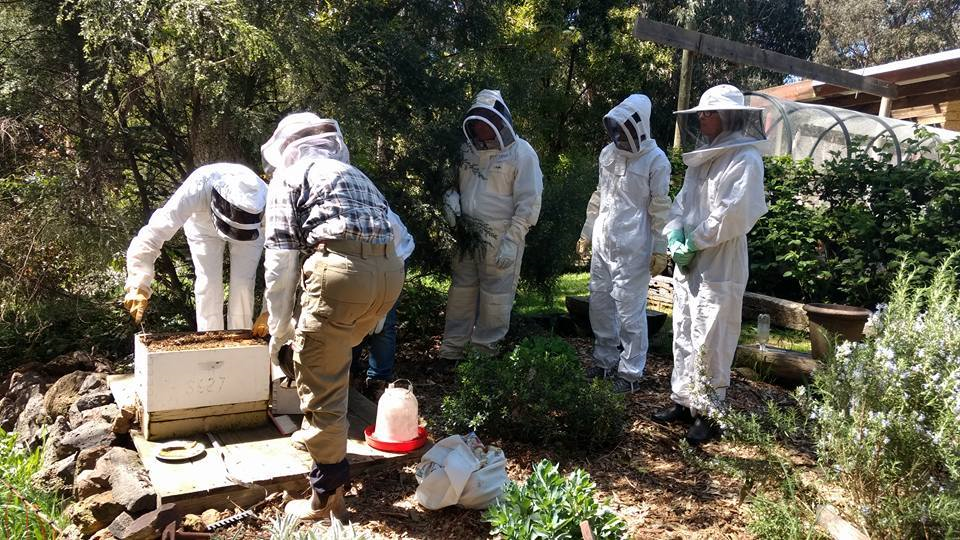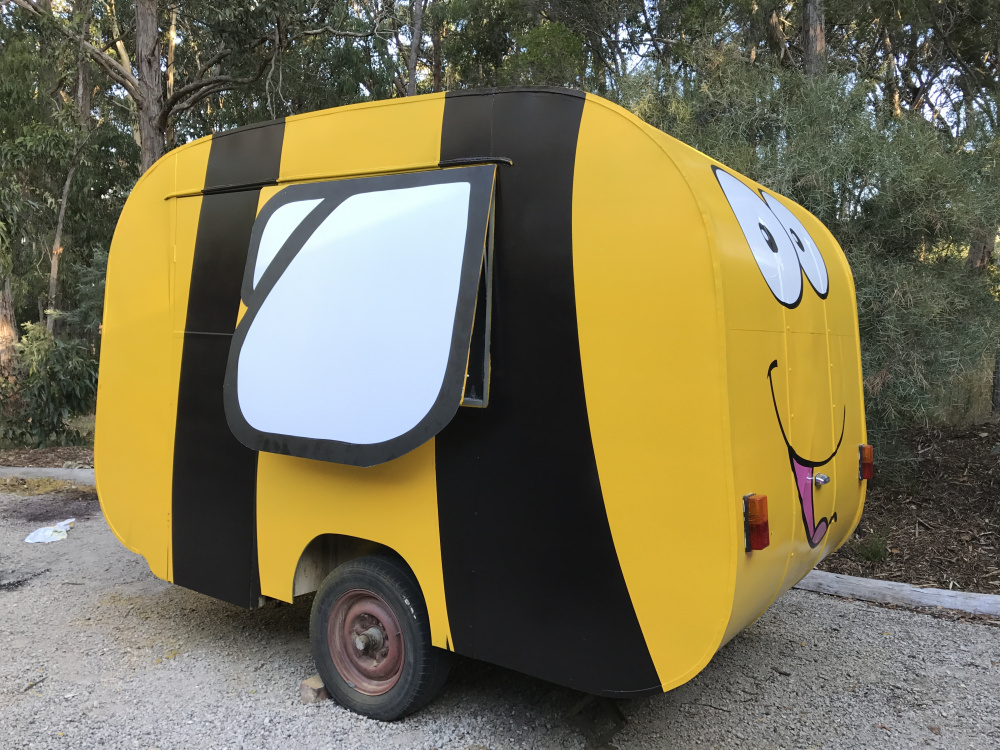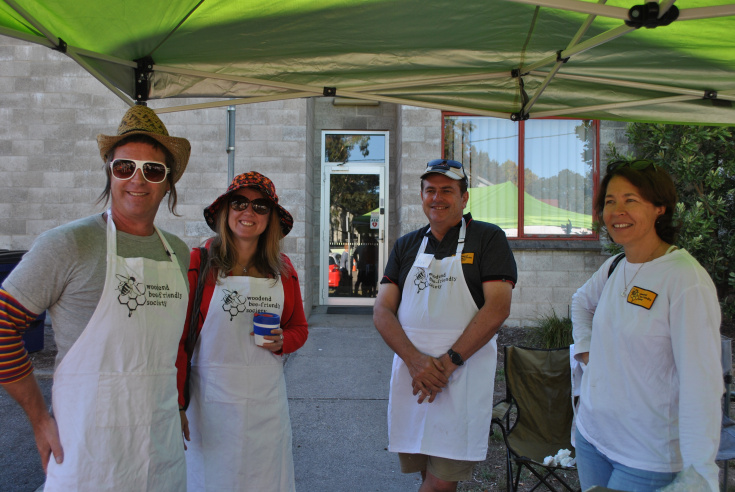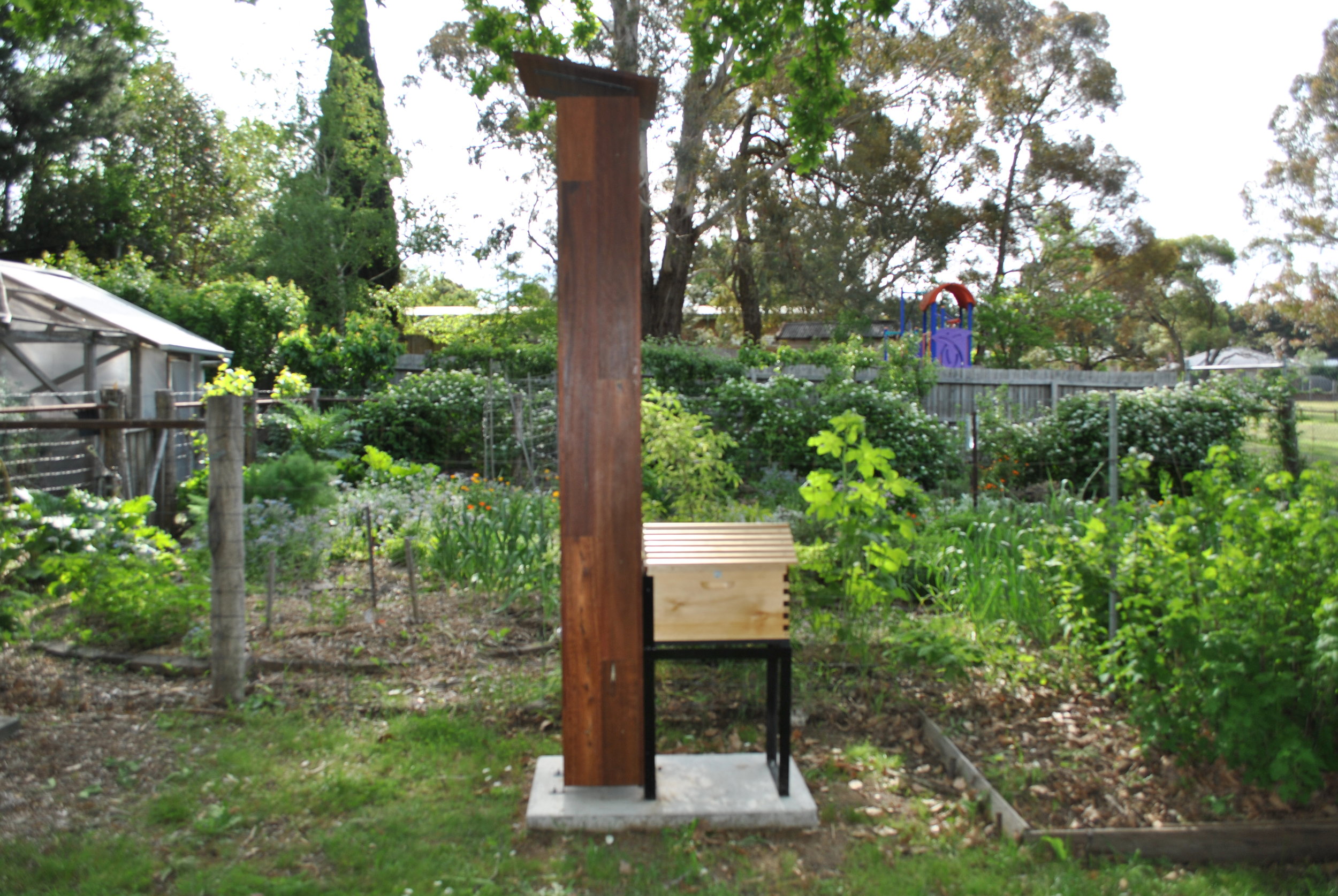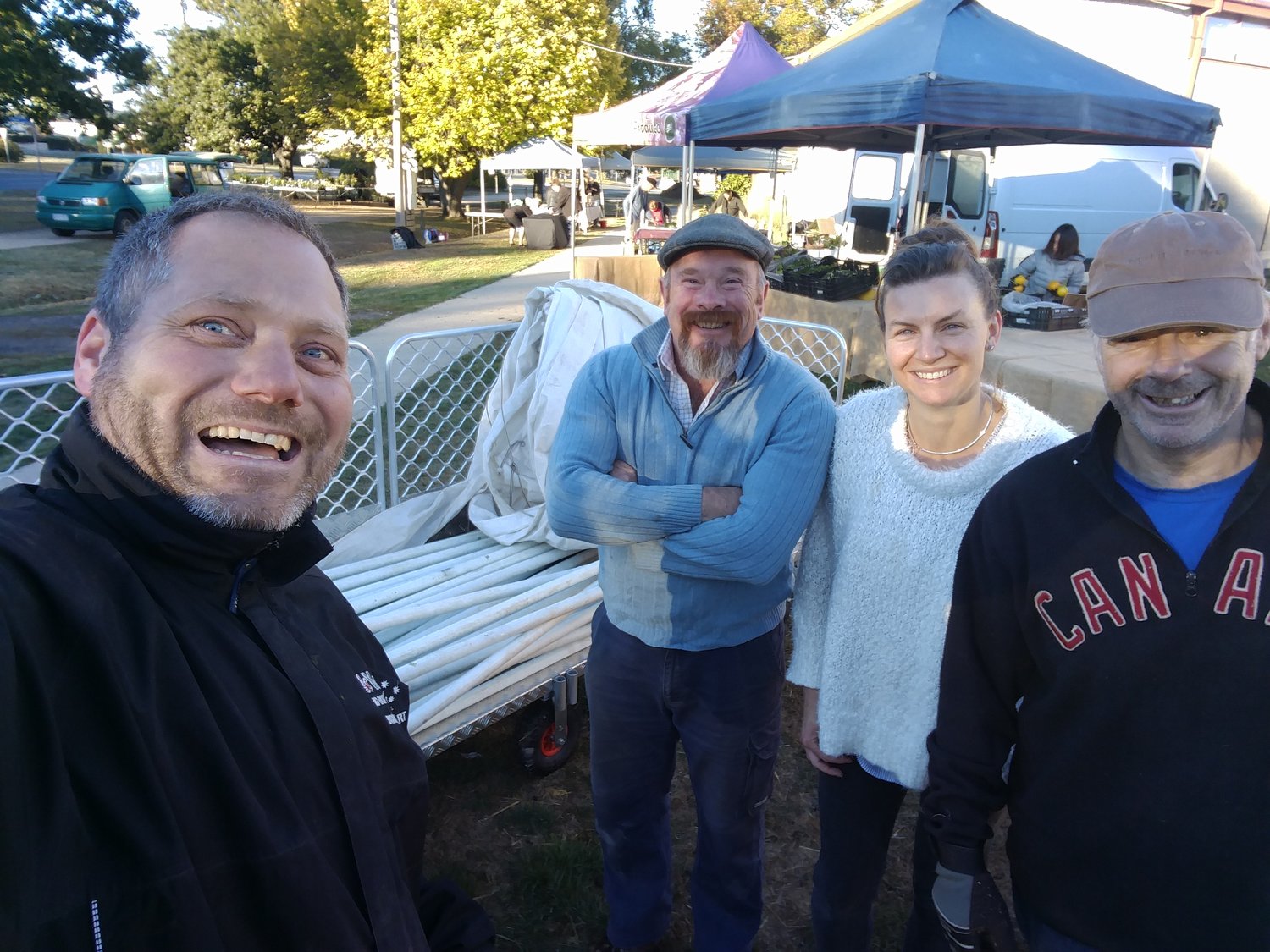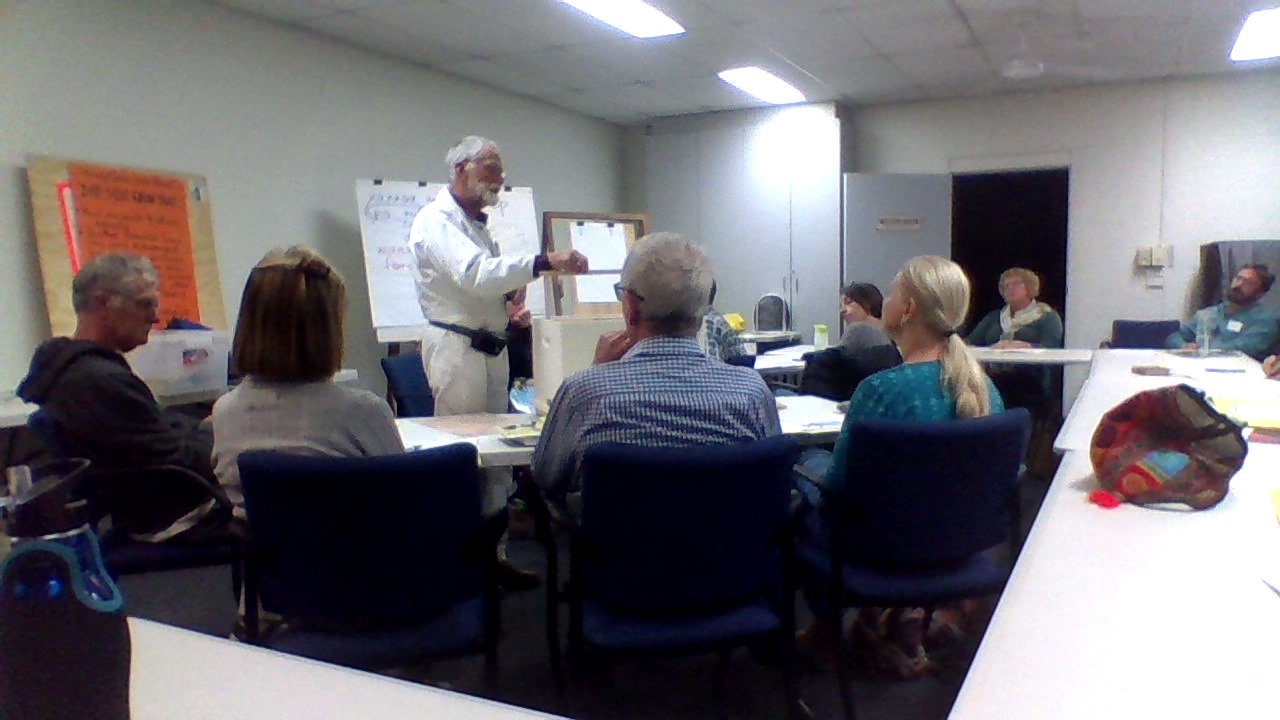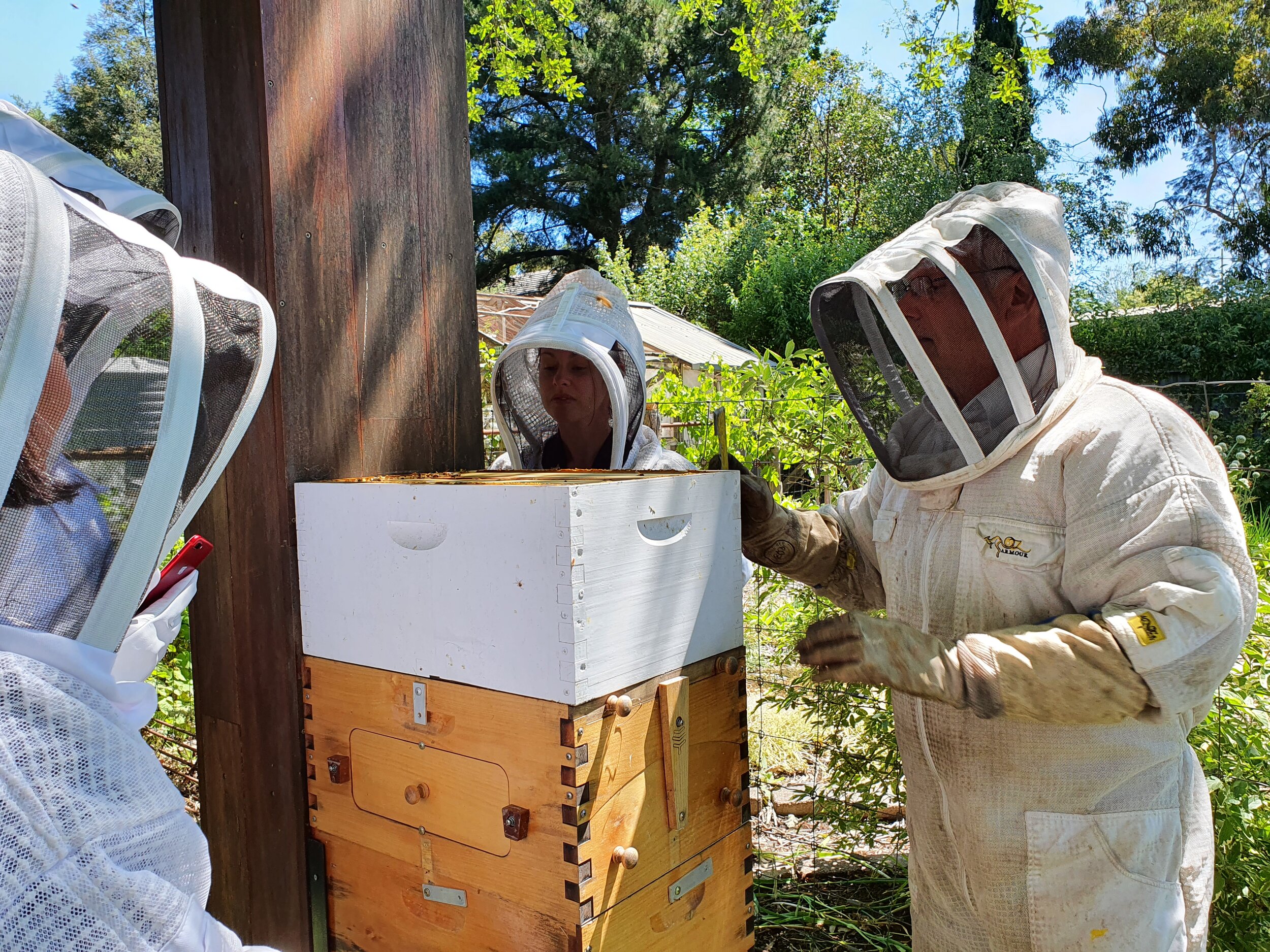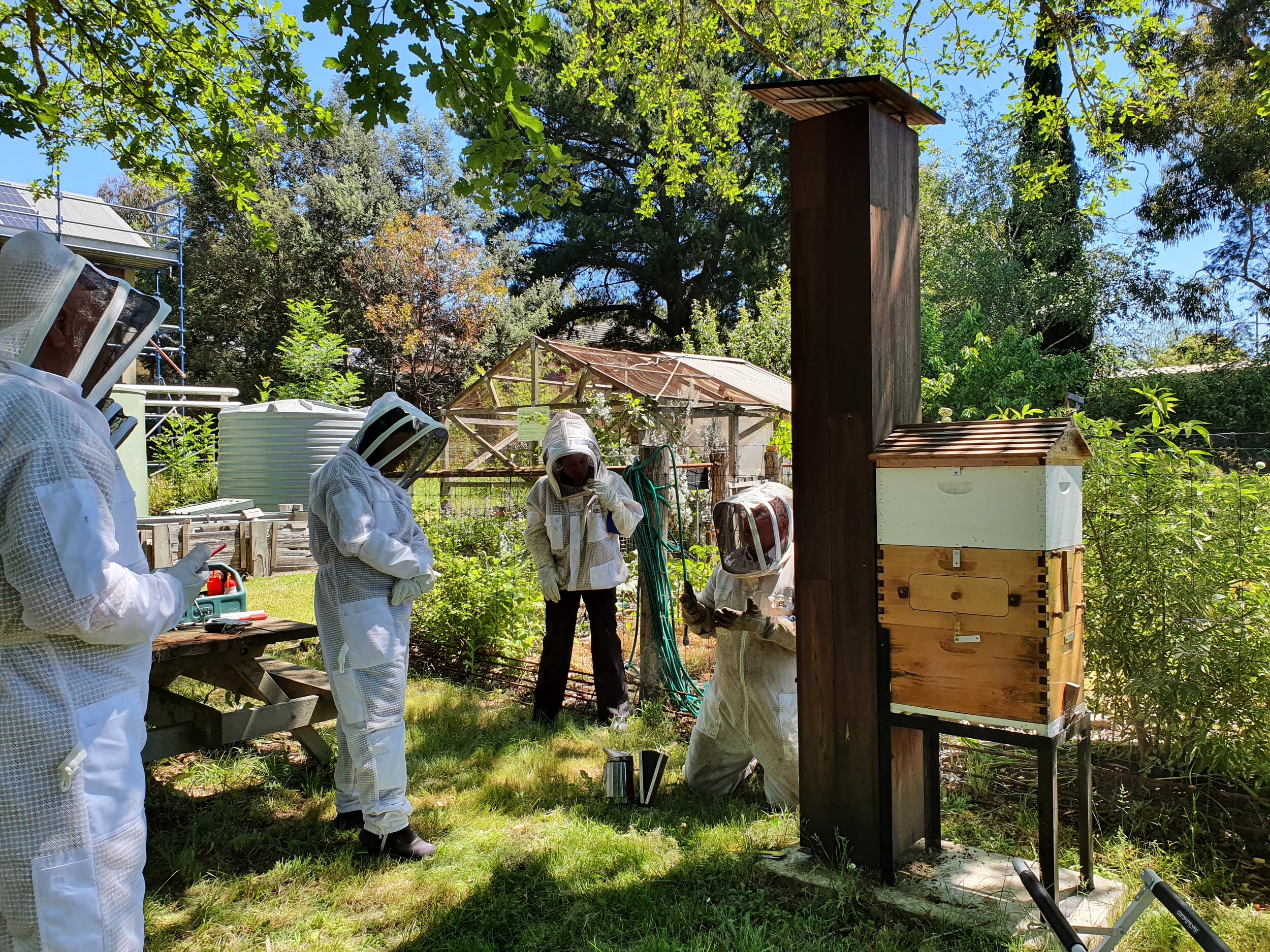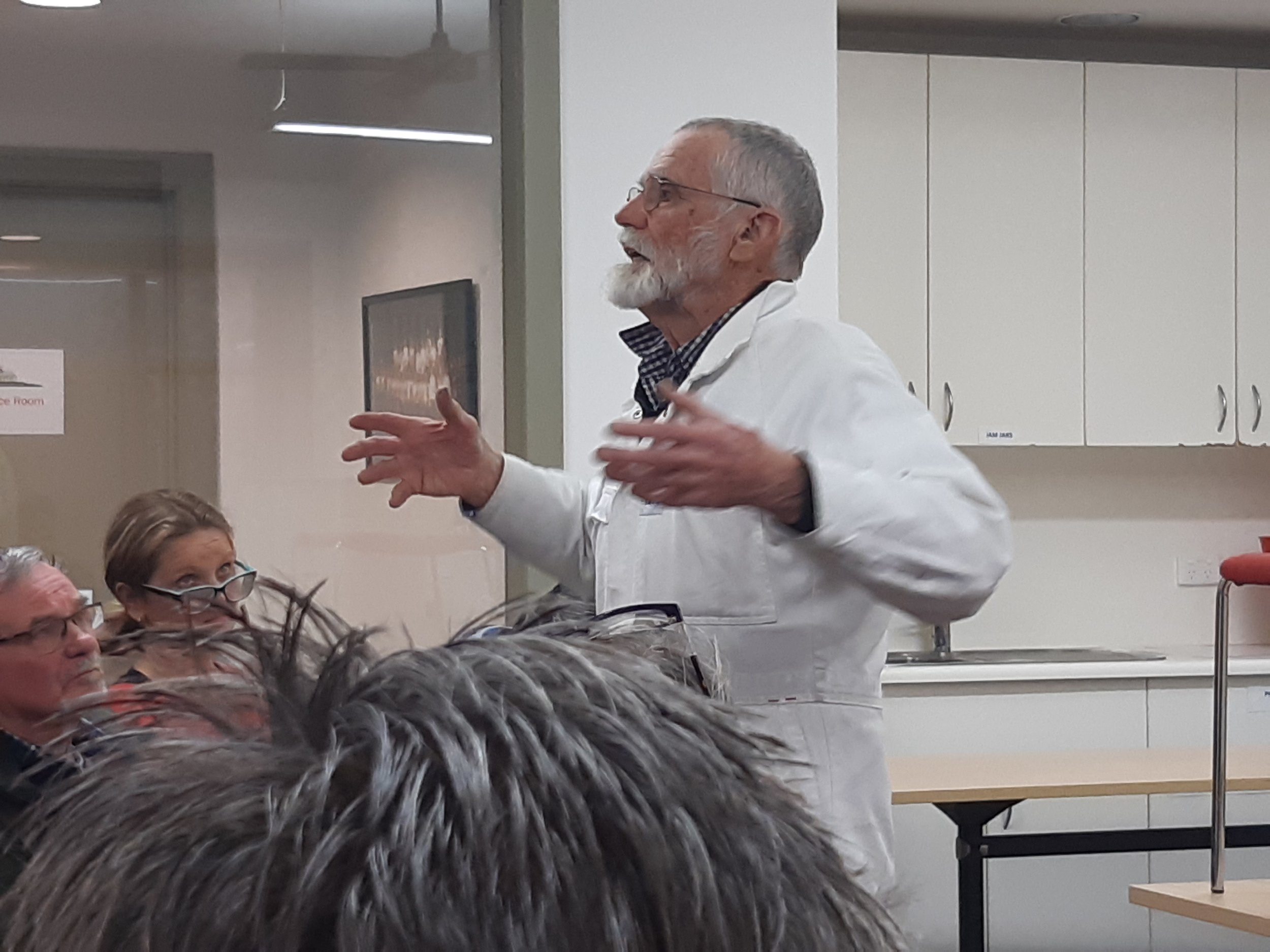
Welcome to the Woodend Bee-Friendly Society
The Woodend Bee-Friendly Society is an action group of the Macedon Ranges Sustainability Group which embraces many modes of beekeeping including Langstroth, with or without foundation, the Warre and Kenyan top bar hives, flow hives etc, provided that they comply with biosecurity regulations.
The be(e) friendly term in our name is deliberately intended to emphasise the dual motivations of this group – being friendly to bees and being friendly to each other.
Monthly meetings are generally themed to the particular time of the year thus enabling timely sharing of knowledge, especially helpful for new bee keepers. There’s generally time for some Q&A, please bring your questions! Everyone is welcome to come, whether you are exploring beekeeping in the future, or are a novice with a hive or two, or whether you are a very experienced beekeeper. You will be made very welcome.
WHEN: Meets every third Sunday of the month (except December), 3-4.30pm
WHERE: Woodend Neighbourhood House, 47 Forest St, Woodend 3442. (map )
Gold Coin Donation requested
It’s been said that if a member attended every WBFS meeting in a year, they’d be completing a year long bee-keeping course!
WFBS EVENTS
Upcoming Meeting Dates: 2024
Meetings are held on the third Sunday of every month from 3:00pm - 4:30pm at the Woodend Neighbourhood House:
21 January 2024
18 February 2024
17 March 2024
21 April 2024
19 May 2024
16 June 2024
21 July 2024
18 August 2024
15 September 2024
20 October 2024
17 November 2024
WBFS BEESUITS
WBFS MERCHANDISE
Methods to check your hives for Varroa Mite
Drone Uncapping Method
Sugar Shake Method
Alcohol Wash Method
All equipment needed to check your hives for Varroa Mite are available from our supporters Waggle and Forage in Kyneton
WOODEND BEE-FRIENDLY SOCIETY OUT & ABOUT
ALL ABOUT SWARMING
Swarming is a natural phenomenon that occurs each year, usually in spring or early summer. It is a bee colony’s method of reproduction, as distinct from reproduction of individual bees. Swarming is mostly a feature of strong colonies that have large numbers of worker bees and an active laying queen. Colonies that are weak due to disease, poor queen fertility or starvation are not likely to swarm until they recover and build up in population.
Equipment / Safety
Swarms can vary enormously in size, location and temperament so it is essential to be prepared for the collection and continued management of the colony.
Collection Equipment: this varies depending on the difficulty but typical equipment includes: ladder, secateurs, loppers, suitable swarm box, clean sheet, dustpan and brush, protective clothing, smoker, tape, etc.
Beekeeping Equipment: all equipment for the continued management of the colony should be available before collecting a swarm. This includes protective clothing, smoker, hive tools and hive ware: a clean, well assembled hive including base, lid/roof and full complement of frames/bars is essential. Swarms can expand very rapidly so additional boxes, frames/bars, etc., should be a priority. The hive position should be prepared before collection.
Safety: obtain any assistance and/or permissions appropriate to the swarm location. Ensure members of the public are at a safe distance and any people involved in the collection are aware of their allergic status.
Biosecurity
Swarms can carry a number of pests and diseases, so it is important for beekeepers to be aware of their biosecurity responsibilities before collecting their first swarm. Familiarisation with the Agriculture Victoria compliance and anagement content is essential: http://agriculture.vic.gov.au/agriculture/livestock/honey-bees/compliance-and-management
Swarm Collection Best Practice:
Quarantine swarms from other hives for at least 3 months. Check for pests and diseases regularly.
Maintain a barrier system between swarm apiaries and other apiaries.
Do not feed swarms until larvae are present. This reduces the risk of them storing AFB-infected honey carried with them. Similarly, ensure swarms are placed onto ‘dry’ frames – no honey or nectar present.
Monitor the colony’s genetic traits – productivity, aggression, hygiene (disease resistance). Re-queen if necessary.
CONNECT WITH WOODEND BEE-FRIENDLY SOCIETY
WBFS LEADERSHIP GROUP MEMBERS
Action Group Leader: Samantha Rixon
Matthew Croatto - Bio-security Representative, Meeting Presenter
Jim Sansom - Swarm Monitoring Project Manager, Meeting Presenter
Tino Corsetti - Newsletter & Website
Carolyn Hearnden - Social Media
Ewen Redman - Meeting Coordination
To view the Terms and Conditions of WBFS social media please click here
GET ON THE MAILING LIST
To receive regular emails full of useful information for your beekeeping endeavours from the Woodend Bee-Friendly Society join the Macedon Ranges Sustainability Group and choose Woodend Bee Friendly Society as an action group.








